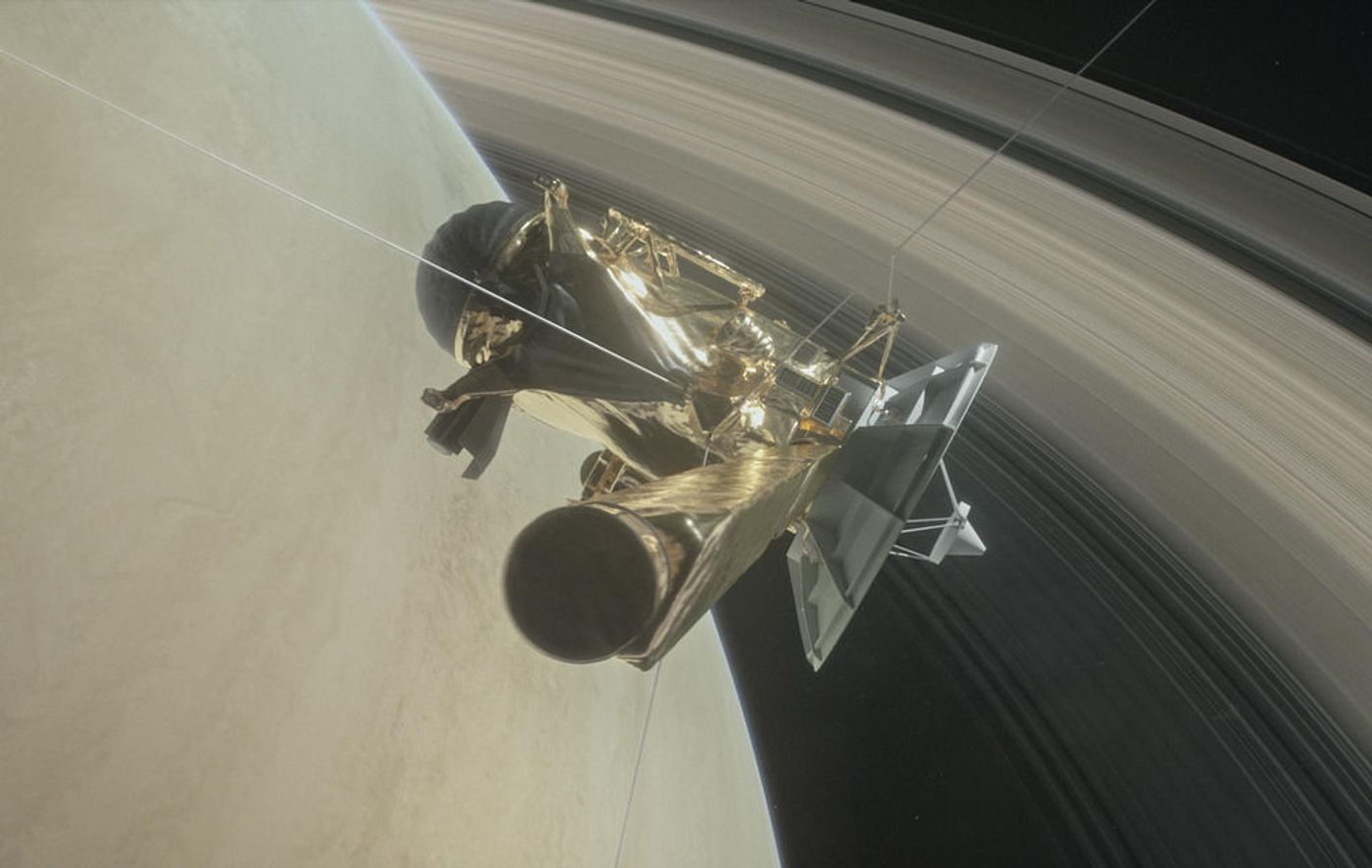Cassini Mission Prepares for Grand Finale, Takes First Baby Steps
The Cassini mission involves the probe that’s currently circling Saturn and taking vivid pictures of the gas giant planet itself, as well as its fascinating robust rings, and the tens of moons that orbit the planet.
Cassini has been there for approximately 13 years, collecting information for scientists and helping us map out the Saturnine system. While there, it has helped uncover the mysteries of some of the planet’s misunderstood moons, such as Enceladus and Titan, which are each important for their own reasons.
Image Credit: NASA/JPL-Caltech
Saturn has many moons – 62 is the current count – but only some of them have everyone’s attention. Enceladus, for example, is believed to have a subsurface ocean, which might have the means of supporting alien life. Titan has interesting liquid methane lakes all over its surface, which are another point of interest for scientists.
As Cassini runs out of fuel, engineers are preparing the spacecraft for a grand finale suicide mission in which it will plunge into Saturn’s atmosphere to avoid colliding with any of Saturn’s moons. It’s an attempt to prevent contamination of any of the moons and keep them as pure as possible for future observations.
The first baby steps into the grand finale have already been taken, as Cassini recently used a gravitational slingshot provided by Titan, the largest of Saturn’s moons, to get into a much closer orbit in between Saturn’s atmosphere and its rings.
Related: Check out the waves in Saturn's rings, photographed by Cassini
At this altitude, estimated to be around 3,000km above Saturn’s atmosphere, Cassini can study Saturn in even more detail, keeping track of additional tidbits of information for scientists right before the crash course that’s scheduled for September of this year.
One of the questions that will reportedly be answered during this finale is exactly how long a day lasts on the planet Saturn, a question whose answer has eluded scientists for a long time.
According to scientists, we only have estimates and it varies depending on how you look at the planet, so being this close finally gives us an opportunity to get an accurate reading. Because Saturn is a gassy planet, the poles can rotate faster than the equator, which means there is some inconsistency in how it spins, unlike on a terrestrial planet such as Earth.
Additionally, now that we’re closer than ever to the rings of Saturn, we can finally probe deeper into what makes up the rings to better understand their age and composition. While we know they’re icy, we still don’t know how large the ice clumps are, a question we hope to finally answer.
It should be interesting to see how much information we can get out of Cassini before the spacecraft finally does go into nose-dive mode. On the other hand, saying goodbye to the only information-gathering spacecraft we have in the region isn’t easy and scientists are already scheming to send more probes towards Saturn to study Enceladus up close.
Source: BBC









